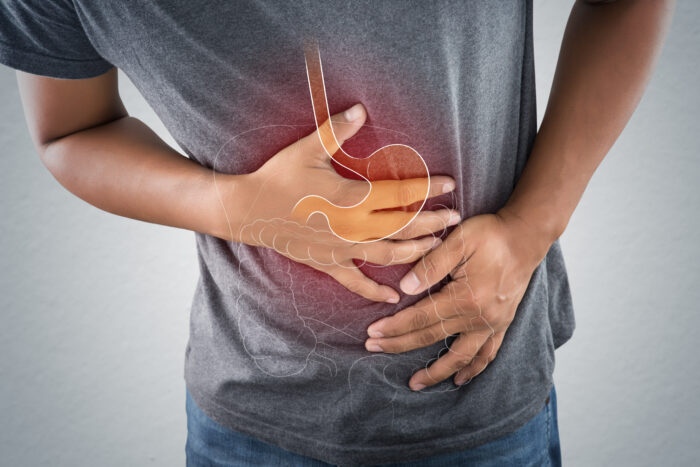Did you know that May is Celiac Awareness Month? We are here to increase awareness surrounding this disease by discovering the many ways diagnosed individuals can maintain a diet full of delicious foods.
Learning how to manage a celiac disease diagnosis, especially later in life, can feel daunting. No more gluten? That seems impossible! Instead of concentrating on what can’t be eaten, try focusing on what can. This is the perfect opportunity to expand diet variety by trying new foods and recipes!
It is also important to remember that no one has to embark on this journey alone. A Registered Dietitian Nutritionist (RDN) is an amazing resource for guidance and support. Keep reading to learn more about how an RDN can help individuals achieve a balanced and nutritious diet, without gluten! Plus, quick tips to keep in mind while at the grocery store.
Celiac Disease and Gluten
Celiac Disease is an incurable, autoimmune disorder in which the immune system in diagnosed individuals reacts to gluten in a way that causes damage to the lining of the small intestine. Experiencing abdominal pain, bloating, gas, diarrhea, and nausea among other symptoms after consuming gluten is common. If untreated, nutrients cannot be absorbed properly, possibly leading to malnutrition, anemia, bone disease, or other conditions.
What is Gluten?
Gluten is the protein in barley, wheat, and rye. Its job is to act as glue to help foods maintain their shape. While we typically think of gluten as just being present in wheat or grains, it can also be found in many unexpected foods, like soup, lunchmeat, and salad dressings. For this reason, it can be challenging and confusing at times to decide which foods are safe to eat for those with Celiac disease. The good news is, as knowledge of this condition continues to grow, many restaurants, grocery stores, and food manufacturers are finding ways to produce and offer more gluten-free versions of popular foods like bread, pasta, and pastries.
How Can a Dietitian Help?
Currently, the only treatment for this disease is to follow a gluten-free diet for life. Having a support system to help navigate life’s pivots, like this one, can be invaluable. An RDN can be a part of that system by helping patients/clients successfully manage the diagnosis, maintain nutritional health, and avoid adverse, long-term effects of celiac disease. This is accomplished with medical nutrition therapy (MNT) in the following ways:
Providing Evidence-Based Nutrition Education On:
- A gluten-free diet
- Label reading for foods, supplements, and medications
- Cross-contamination and steps to avoid contaminating foods when cooking and preparing meals at home
- Identifying gluten-free foods and gluten-containing sources to avoid
- Locating companies and stores to purchase/order safe, gluten-free products
- Meal Planning
- Additional reputable resources (websites, books, etc.) for more information on this disease.
Assisting in the Prevention of Nutrient-Related Deficiencies
Leaving Celiac disease untreated can cause deficiencies in many vitamins and minerals including iron, zinc, calcium, and vitamin B12, as well as fiber, protein, and calories. An RDN will help remedy these deficiencies with food, diet choices, and by finding high-quality supplements that are gluten-free and do not exceed 100% of the daily value (DV).
Creating an Intervention and Goals that are Individualized to YOU!
During appointments with an RDN, he/she will conduct an assessment to learn about the symptoms, diet history, and lifestyle to work together to find strategies for coping and meeting nutritional needs in a realistic and motivating way.
Grocery Shopping for Success
Grocery stores can feel like a place of uncertainty after a celiac disease diagnosis. To increase confidence in one’s ability to choose foods that are safe, there are a few important things to know. First, while it is optional to use a “gluten-free” label in the United States, items that have this label must contain less than 20 parts per million of gluten. The reason for this is because it is impossible to detect levels below this. The good news? Most individuals with celiac disease can still tolerate this small amount. So, remember, all foods that are labeled “gluten-free” must meet this standard, but not all gluten-free foods have this label.
How do you know if a food is gluten-free then?
Reading the ingredients list on the product’s packaging is the best place to start, but you can also reach out to the food manufacturer if you are still unsure. Once the ingredient list on a package has been located, what ingredients should you look for to determine if the food item contains gluten? Keep reading to find out!
Grains are not typically thought of as gluten-free. While this is true in many cases, there are a few exceptions. Here is a list of grains and starches that are naturally gluten-free:
- Rice
- Quinoa
- Millet
- Oats
- Cassava/Yuca
- Sorghum
- Teff
- Corn
- Buckwheat
- Amaranth
- Potatoes and potato flour
One thing to note about oats is that while they do not contain gluten themselves, there is a risk of cross-contamination because they are often grown, transported, and processed with gluten-containing products. There have also been reports of individuals with celiac disease still experiencing symptoms even when eating gluten-free oats.
Gluten-Containing Ingredients to Avoid:
- Wheat
- Other forms/varieties of wheat that should also be avoided: whole wheat, spelt, wheat berries, kamut, durum, farro, farina, bulgur, graham, semolina, bromated flour
- Barley
- Rye
- Triticale (a cross between rye and wheat)
- Malt
- Hydrolyzed wheat protein
- Modified food starch: If the label doesn’t specify what type of starch is used, check with the manufacturer, as it may be wheat.
- Malt: Including malt syrup, malt vinegar, malt extract, malt flavoring
- Gluten stabilizer
- Maltodextrin: This is OK when made from corn, potato or rice starch. If it’s made from wheat, it will be labeled
We hope you found this resource valuable and feel ready to conquer a celiac disease diagnosis. Follow this link to access a gluten-free shopping list that you can bring on your next grocery store run!
References:
- May Celiac Awareness Month | Celiac Disease Foundation
- Gluten Free Foods List
- Gluten Free Shopping List
- Celiac Disease: An Academy of Nutrition and Dietetics Evidence-Based Nutrition Practice Guideline – PubMed
- Celiac Disease Nutrition Therapy (2023) – Nutrition Care Manual
- Celiac Disease: An Introduction
- Gluten Free Pantry Essentials



